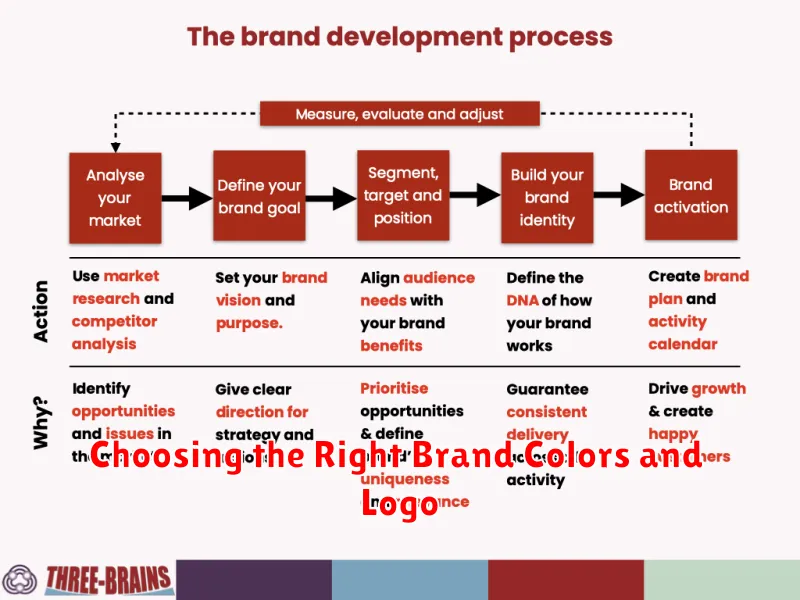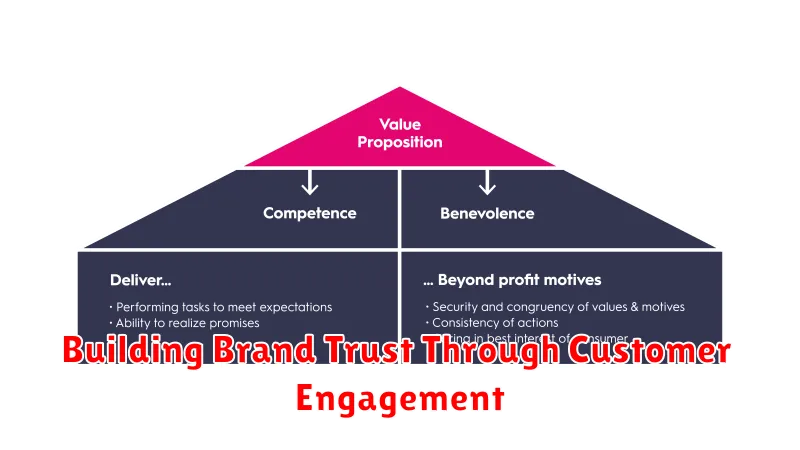Building a strong brand identity is crucial for the success of any online business. In today’s competitive digital landscape, a compelling brand is more than just a logo; it’s the foundation upon which you build customer loyalty, brand recognition, and ultimately, profitability. This guide will provide you with a comprehensive approach to developing a powerful brand identity, encompassing branding strategies, visual identity, messaging, and online presence, enabling you to differentiate your business and attract your target audience effectively. Learn how to establish a unique brand voice, craft a memorable brand story, and harness the power of consistent branding across all platforms to achieve lasting online success.
The Importance of Branding in Online Business

In the crowded digital marketplace, a strong brand is paramount for online business success. It’s more than just a logo; it’s the overall perception customers have of your company, products, and services.
Brand recognition is crucial for attracting and retaining customers. A memorable brand makes your business easily identifiable amidst the competition, fostering customer loyalty and trust. This translates into increased sales and a sustainable competitive advantage.
A well-defined brand establishes clear differentiation. It helps you stand out from competitors by highlighting your unique value proposition and communicating what sets you apart. This clarity resonates with your target audience and builds brand preference.
Moreover, a solid brand identity facilitates effective marketing. It provides a consistent framework for all your communication efforts, ensuring a unified and impactful message across all platforms. This consistency reinforces brand recognition and builds customer trust.
Ultimately, branding is an investment that yields long-term returns. It builds a valuable asset that protects your business from market fluctuations and enables sustainable growth. Investing in your brand is investing in the future of your online business.
How to Define Your Unique Selling Proposition (USP)
Your Unique Selling Proposition (USP) is the single, most compelling reason why a customer should choose your online business over the competition. It’s what sets you apart and should be clearly communicated in all your branding efforts.
To define your USP, start by identifying your target audience and their needs. What problems do they face? What solutions are they currently using? How can your business offer a superior solution?
Next, analyze your competitive landscape. What are your competitors offering? What are their strengths and weaknesses? Identify where you can provide a better product, service, or experience.
Consider your unique strengths. Do you have proprietary technology? A unique business model? Exceptional customer service? Exceptional expertise? Focus on what truly differentiates you from the competition.
Once you’ve identified your key differentiators, craft a concise and compelling statement that clearly communicates your USP. This statement should be memorable, easy to understand, and benefit-oriented, highlighting the value you provide to customers.
Regularly review and refine your USP as your business evolves and the market changes. A strong USP is a crucial foundation for building a strong brand identity.
Choosing the Right Brand Colors and Logo

Your brand colors and logo are fundamental to your online business’s visual identity. They are the first things potential customers notice and significantly impact their perception of your brand.
When selecting colors, consider your target audience and the emotions you want to evoke. Consistent color palettes across all platforms build brand recognition. Research color psychology to understand the associations different colors hold – for example, blue often conveys trust, while green suggests growth.
Your logo should be memorable, easily recognizable, and versatile enough to work across various sizes and formats. Keep it simple, avoiding overly complex designs. Ensure it clearly reflects your brand’s personality and values. Consider consulting a professional designer to create a high-quality logo that effectively represents your business.
The combination of your carefully chosen colors and a well-designed logo will create a strong visual foundation for your brand, influencing customer perception and fostering lasting brand recognition.
Crafting a Compelling Brand Story
A strong brand identity hinges on a captivating brand story. This narrative isn’t just about your products or services; it’s about the values, mission, and passion driving your business. It’s the emotional connection you forge with your audience.
Start by defining your brand’s core purpose. What problem are you solving? What unique perspective do you offer? Then, craft a narrative that highlights your journey, your challenges, and your triumphs. This authenticity resonates deeply with consumers.
Ensure your story is concise and memorable. Use vivid language and relatable examples to paint a picture of your brand’s personality and ethos. Integrate your story across all brand touchpoints, from your website to your social media presence, ensuring consistency and a unified message.
Remember, your brand story isn’t static; it evolves with your business. Regularly review and refine your narrative to reflect your growth and continued commitment to your values. A compelling brand story is a powerful tool for building lasting customer loyalty and establishing a strong market position.
Building Brand Trust Through Customer Engagement

Building trust is paramount for any online business. Engaging customers effectively is key to achieving this. It’s not just about making a sale; it’s about fostering a relationship.
Proactive communication is vital. Respond promptly to inquiries, address concerns directly, and keep customers informed about updates and new developments. This demonstrates responsiveness and a commitment to their satisfaction.
Personalized experiences are powerful. Utilize data to understand customer preferences and tailor interactions accordingly. Offer relevant recommendations and exclusive offers to show you value their individual needs.
Encourage two-way communication. Create opportunities for feedback through surveys, reviews, and social media engagement. Actively solicit opinions and demonstrate that you value customer input. Address both positive and negative feedback openly and honestly.
Transparency builds trust. Be upfront about your business practices, policies, and any potential limitations. Honest communication, even when dealing with challenges, demonstrates integrity and strengthens your brand’s reputation.
By prioritizing customer engagement and building strong, trusting relationships, your online business can cultivate loyalty, increase advocacy, and ultimately achieve sustainable growth.
The Role of Social Media in Brand Awareness
Social media plays a crucial role in building brand awareness for online businesses. It provides a direct channel to connect with your target audience, fostering engagement and building relationships.
Through consistent posting of high-quality content, including images, videos, and engaging text, businesses can showcase their brand personality and values. This builds familiarity and recognition, leading to increased brand recall.
Targeted advertising on social media platforms allows businesses to reach specific demographics and interests, maximizing the impact of their marketing efforts and driving brand awareness to the most relevant potential customers.
Furthermore, social listening, or monitoring social media conversations about your brand, provides valuable insights into customer perception and allows for proactive management of brand reputation, contributing significantly to overall brand awareness.
In short, a well-executed social media strategy is essential for raising brand visibility and creating a strong, memorable brand identity in the competitive online marketplace.
How to Use Content Marketing to Strengthen Your Brand

Content marketing is a powerful tool for building a strong brand identity. By consistently creating and distributing valuable, relevant, and engaging content, you can attract and retain customers, establish your business as a thought leader, and ultimately strengthen your brand.
Focus on content that aligns with your brand values and speaks directly to your target audience’s needs and interests. This could include blog posts, videos, infographics, podcasts, and social media updates. Ensure your content is of high quality and consistently reflects your brand’s personality and voice.
SEO optimization is crucial. Employing relevant keywords helps your content rank higher in search engine results, increasing visibility and driving more traffic to your website. This increased exposure builds brand awareness and reinforces your brand’s position within your industry.
Analyze your results. Track key metrics such as website traffic, social media engagement, and lead generation to understand what resonates with your audience and adjust your content strategy accordingly. Consistent analysis allows for refinement and ensures you’re creating content that truly strengthens your brand.
Remember, building a strong brand takes time and consistent effort. By implementing a well-defined content marketing strategy, you lay a strong foundation for a successful and recognizable brand in the long term.
Measuring Brand Awareness and Customer Loyalty
Building a strong brand identity requires understanding your audience. Measuring brand awareness and customer loyalty is crucial for gauging your success. Brand awareness can be assessed through surveys, social media monitoring, and website analytics, focusing on metrics like reach and mentions. Higher brand awareness translates to more potential customers.
Customer loyalty, on the other hand, is measured by metrics like customer retention rate, repeat purchase rate, and Net Promoter Score (NPS). A high customer loyalty score indicates a strong relationship with your customers, leading to sustainable growth. Analyzing both brand awareness and customer loyalty provides insights into your brand’s effectiveness and identifies areas for improvement.
By tracking these key metrics, you can refine your branding strategy, ensuring your online business resonates with your target market and cultivates lasting relationships. This data-driven approach allows for more effective resource allocation and optimized marketing efforts, ultimately contributing to a more successful and sustainable business.

